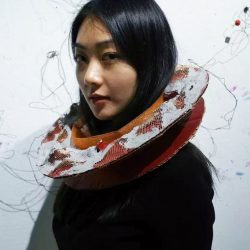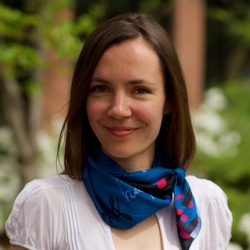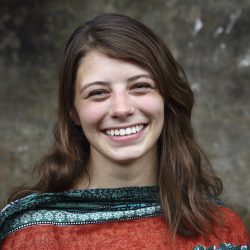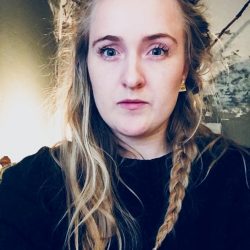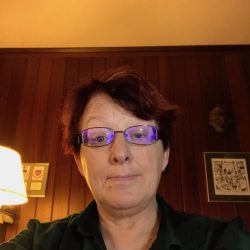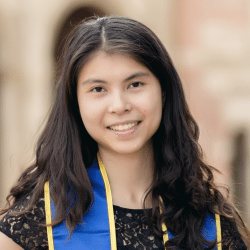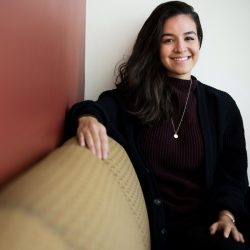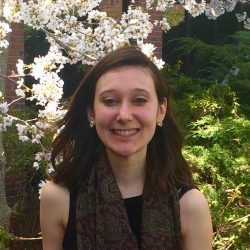Home / Fellow Cohorts / TIE Fellows 2018-2019
TIE Fellows 2018-2019
wù mái (Chinese Air Pollution)
The air pollution China now suffers from is called Wù Mái, Wù means fog, Mái means Haze. Wù Mái is the result of interaction between specific climatic conditions and human activities. By creating an art installation, I want to do something to respond Wù Mái. It’s a collaboration work with a projected video which is smoke effected in a geodesic dome structure. The structure will be wrapped by clear plastic and people can watch the video through the structure. The spectators will have the experience of what people experience in vastly polluted area. By giving spectators this experience, I want to draw public attention to air pollution. Air pollution is everywhere, and if we ignore it and we accept it, it will become a grave issue. At that time, it’s too late to take action.
Mapping the Factors of Energy Technology Innovation - Assessing the technology gap in a group of selected transition economies in Latin America
Zdenka is pursuing an interdisciplinary research with the aim to assess the energy technology innovation capacity building in Latin America. To accomplish that, she will assess what metrics are necessary and what data are available on clean energy technology innovation in Brazil, Chile, Mexico, and Peru, which factors are most important in motivating the enhancement of clean energy technology innovation in these countries, and how Latin American countries can strengthen their energy innovation systems using appropriate policies. She will also aim to collect the missing data that would allow for measuring and understanding of the energy innovation capacity building in these countries. This project is a part of her doctoral dissertation research.
Does artificial light impede firefly courtship?
Over the previous century, the slow spread of urbanization has introduced light pollution into over 80% of nocturnal habitats. This is habitat disruption on a massive scale, and we know little about what it means for nocturnal animals, or those who appreciate them. In summer 2018, I plan to investigate the impact of artificial light on the courtship of two common New England fireflies: Photinus obscurellus and Photinus greeni. I will expose these fireflies to light of varied wavelength and intensity, and evaluate its effects on their reproductive success. I will then prototype a “firefly friendly” light source specifically for use in firefly habitat. At the same time, I will work with Tufts Department of Urban and Environmental Policy and Planning to write a set of sustainable lighting guidelines that communicate my results to architects, urban planners, and policy makers, ensuring my work has real world impact.
Vibrio parahaemolyticus in Post-Harvest Oysters in Rhode Island and Massachusetts
Vibrio parahaemolyticus is a chitinolytic, Gram-negative bacterium found in seawater that has great impact on the global aquaculture industry. It colonizes shellfish and seafood, causing gastroenteritis and septicemia when ingested by humans. Eastern oysters (Crassostrea virginica), commonly grown in New England coastal waters, accumulate V. parahaemolyticus by finely filtering water. The greater the bacterial burden, the more likely foodborne illness will occur in individuals consuming raw oysters. Both Massachusetts and Rhode Island have Vibrio Control Plans that specify regulations geared towards minimizing bacterial growth. These regulations vary, and data is lacking on the correlation between the efficacies of regulatory guidelines and effects on V. parahaemolyticus growth. This study is being conducted to inform evidence-based policy on how to minimize human risk of V. parahaemolyticus infection from raw oyster consumption.
Following the superbugs: an assessment of antibiotic resistance genes in human and animal feces in Bangladesh
Antibiotic resistant infections are a growing public health concern. They are prone to treatment failure, increasing treatment time, costs, and mortality rates. Insufficient sanitation and management of animal feces in low-income settings exacerbates the risk of transmission of potentially resistant pathogens, or superbugs. The contribution of pathogens originating in animal feces to the development of human superbugs is of particular concern, due to prevalent use of antibiotics in animal production. My research will assess the abundance and diversity of antibiotic resistance genes (ARGs) in human, chicken, and goat feces collected in rural and urban Bangladesh. This study will provide insight on the relative contribution of ARGs originating in chicken and goat feces to ARGs in human feces in Bangladesh. Furthermore, this research will identify whether rural or urban populations are at greater risk of antibiotic resistant infections and explore the effects of ARG presence on human and animal gut microbiomes.
RIVER NARRATIVE(S)
RIVER NARRATIVES will focus on water ecology in the Gallatin Valley of Montana. My research will analyze the impact of socially engaged performance addressing water conservation and drought and how people’s perceptions, practices and relationships to water is impacted by embodied site-specific art.
How can we conduct research and impact collective change through inclusive methods that listen to diverse voices? What are the revolutionary possibilities that can occur when different knowledge epistemologies come together creating new matrixes of empirical science and affective embodied strategies? These are the central questions I will study in The Gallatin Watershed in Montana this summer 2018, in conjunction with the public art organization Mountain Time Arts. MTA produces temporal public art. Their projects are interdisciplinary by design and address water conditions in the Rocky Mountains West Mountain Time Arts. MTA produces temporal Public art. Their projects are interdisciplinary by design and address water conditions in the Rocky Mountain West.
Efficacy of Vegetative Treatment Areas to Control Release of Antimicrobials to the Environment
Antibiotics are used therapeutically during food animal production to maintain herd health. Much of these antibiotics pass through the animal unchanged and enter the environment through manure management practices such as irrigation with feedlot runoff wastewater. The scientific community is concerned this antibiotic loading will alter the natural biota resulting in increased resistance, thereby making antibiotics that are critical for human and animal health ineffective. Therefore, cost-effective methods are needed to mitigate this environmental risk. A vegetative treatment area is one of these cost-effective means used to capture overflow water from a wastewater holding pond typically used to capture flow from the cattle pens at a combined animal feeding operation (CAFO) before the water can contaminate waterways. The primary objectives of this research are to determine if electromagnetic induction is an effective tool for locating antibiotics deposited within the treatment area and determine the antibiotic transport within the treatment area.
Lead Exposure in Gray Squirrels (Sciurus carolinensis) in Central MA
Although many lead-based products have been banned in the U.S., sources of lead in the environment are still present, such as the wall paint of older buildings in Massachusetts. Gray squirrels (Sciurus carolinensis) are ubiquitous and their role low on the food chain makes them important sentinels for the health of other animals including humans. We will live trap and sample BLL of gray squirrels from urban and rural sites in the Worcester county, MA, to determine 1) if the pattern of suggested higher urban lead exposure from our preliminary studies is real, and 2) if this pattern correlates with reported risk levels in MA children. Squirrels trapped in urban areas are hypothesized to have higher BLL due to urban lead sources. The results will help identify and manage potential sources of environmental lead and manifest the “One Health” concept that the human, animal, and environment health are connected.
Resilience and Recovery among Farmers in Puerto Rico's Mercados Agricolas After Hurricane Maria
This project explores the immediate aftermath of Hurricane Maria, its impact on farmers' lives in Puerto Rico, and the necessary mechanisms to help them return to the markets. The hurricane exposed Puerto Rico's vulnerabilities, especially its dependence on food imports and a limited local food supply chain. Understanding that violent climatic events are on the rise, and that farmers play critical roles in the development of a resilient local food system, this project aims to bring forward their experiences of resilience as a result of this unprecedented hurricane and the impact of different types of response. We plan to collect primary-source data from a representative sample of farmers, their farming operations, and systems that support them. This data will be collected to understand how the current safety-net programs, at the state and federal levels, worked or failed to work in response to the disaster.
TIE-SEI Interns
TIE and the Stockholm Environment Institute (SEI) work together to co-sponsor internships on topics related to Global Environmental Policy. The TIE-SEI Interns work directly with SEI researchers as well as participate in TIE's on-going student development activities as part of the TIE Environmental Research Fellowship.
Robust Decision Making with WEAP for USAID’s Sustainable Water Partnership program
This project is part of the five-year Sustainable Water Partnership (SWP) with the U.S. Agency for International Development (USAID) to build resilience to water security issues through Mission-driven programming. Using the Water Evaluation and Planning (WEAP) system, researchers will engage with local stakeholders to identify the main water vulnerabilities in their communities and support sustainable resource planning. Launched in March 2018, the project is being piloted in the Mara basin in Kenya and Tanzania and Stung Chinit (Tonle Sap basin) in Cambodia. It is currently in the stages of 1) mapping local water security risks; 2) assessing potential trade-offs between stakeholders and expected outcomes of different solutions; and 3) implementing robust, locally-owned solutions.
Supporting Greenhouse Gas Mitigation Action Planning using SEI’s LEAP Modeling Framework
The overarching research project is to use SEI’s Long-range Energy Alternatives Planning (LEAP) Modeling Framework to support developing countries in their energy and climate mitigation planning activities. This includes developing analyses to support their submissions on greenhouse gas mitigation to the UN Climate Convention (UNFCCC) and to the Climate and Clean Air Coalition (CCAC). The country focus will be China. We will work with the UN Global Support Program, UNEP, and local agencies to train users of the model and to work collaboratively with local practitioners to refine the analyses to make it as useful as possible to the needs of the country.
